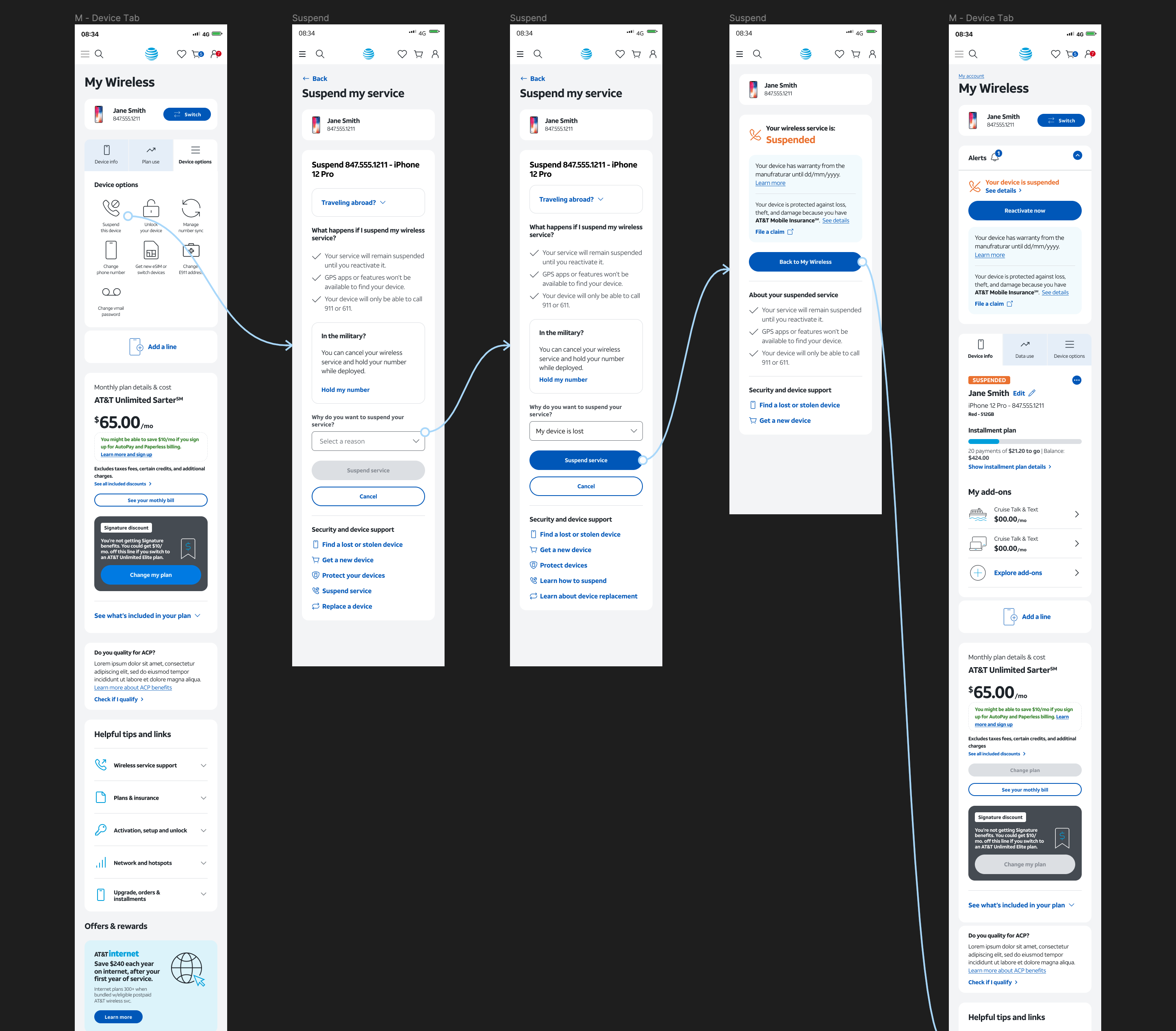Overview
At AT&T, I led the redesign of the account management experience for millions of wireless customers. This project aimed to streamline user interactions, improve design consistency, and simplify backend maintenance. The existing setup had over ten different templates, which made updates and improvements costly and complex for AT&T’s development teams. My role was to unify these templates into a single, flexible design that addressed these challenges while significantly enhancing user experience.
Challenges
- Fragmented Design: With ten different templates in use due to various legacy plans, the design was inconsistent and cumbersome to maintain.
- Maintenance Complexity: Each unique template required dedicated updates, which burdened development teams and slowed down improvements.
- User Experience Gaps: Navigation issues and inconsistent information layouts made it difficult for users to find the information they needed, particularly for mobile app users.
Approach
To solve these issues, I designed a single, dynamic template capable of supporting all account management scenarios, regardless of the user’s plan or device. The design was rooted in a few key principles:
- Unified, Dynamic Template: I developed a simplified, modular template that consolidated multiple flows, reducing design and maintenance overhead.
- Enhanced Flow Architecture: Seven key flows originated from this template, allowing users to manage different account tasks seamlessly.
- Team Leadership and Collaboration: I supervised two junior designers and collaborated with three scrum teams. By utilizing a microservices front-end approach and reusable components, we created a scalable solution that enabled independent functionality for each flow, regardless of entry point.
Highlights
The unified template not only improved the UX for all users but also provided AT&T with a flexible foundation for continuous A/B testing. The design became a baseline for future account management enhancements across AT&T's wireless and broadband services.
Project Outcomes
The new account management design launched in May/June 2023, delivering measurable improvements:
- Record Low Post-Online Call Rate (POCR): At the close of 2023, i-POCR hit a record low of 10%, with a-POCR at 7%. The streamlined template and improved navigation were key contributors to this result.
- Improved Information Visibility: Customer insights from support calls, analytics, and usability tests guided the design, allowing us to surface critical information—like line suspensions, device insurance, or eSIM status—prominently within the interface.
- User-Centered Information Display: I created a simplified UI where users can quickly switch between multiple lines and access contextual information without extra clicks. This experience provides users with essential information right at the top of the page, minimizing search time and enhancing satisfaction.
Mobile and Desktop Cohesion
The redesigned interface used a card-based layout, ensuring that critical information is accessible on both desktop and mobile devices. Each card underwent rigorous usability testing and was dynamically designed to display information specific to the user's account needs. The legal and stakeholder approvals underscored the design’s adherence to business and compliance requirements.
Detailed Flow Enhancement Example: “Suspend / Reactivate” Flow
One significant improvement was made in the “Suspend / Reactivate” flow, allowing users to suspend or resume their services easily. The first phase of this redesign led to a 50% reduction in POCR for users accessing this feature, and I'm eagerly anticipating further positive impacts from the upcoming second phase.
Learnings and Future Enhancements
Throughout this project, I leveraged insights from user behavior data and customer feedback to deliver a data-driven, adaptable user experience. The dynamic template now allows AT&T to run rapid A/B testing and experiment with various messages, layouts, and features, setting the stage for ongoing improvement in user experience.


